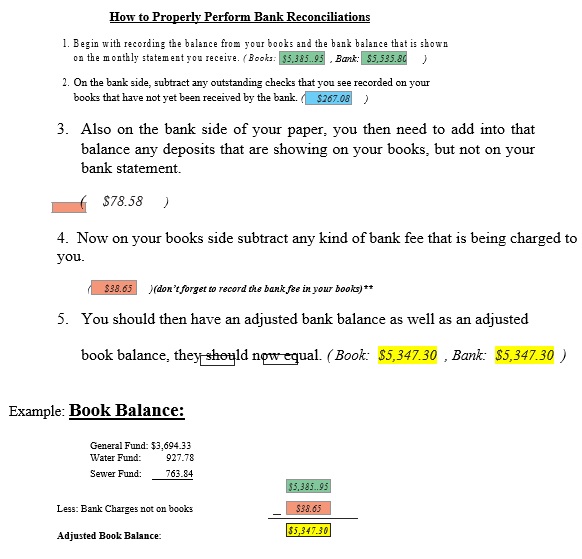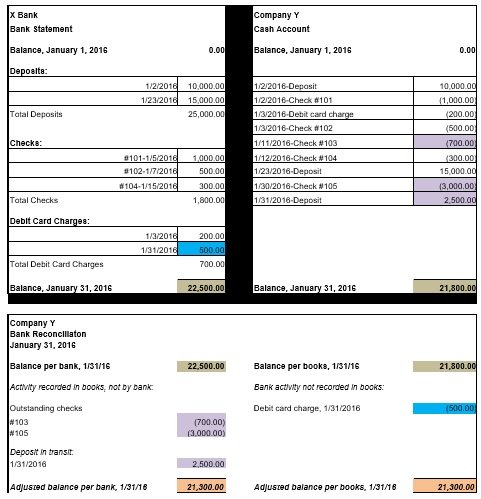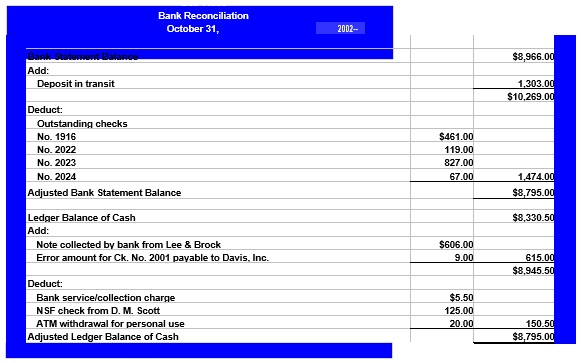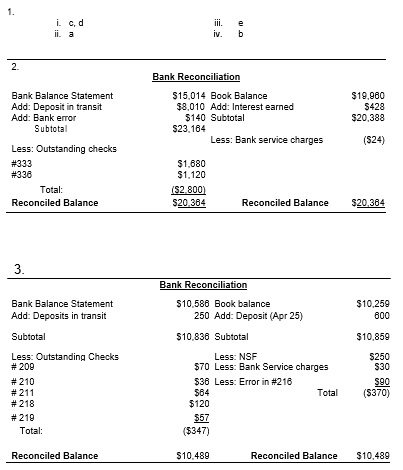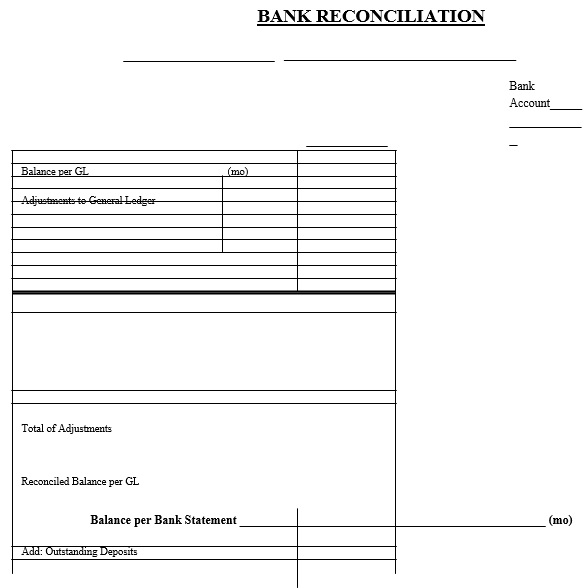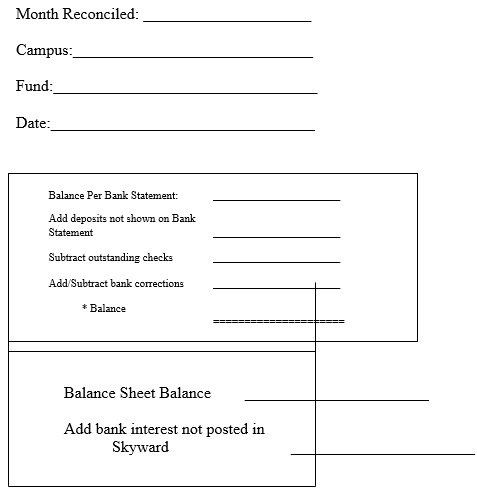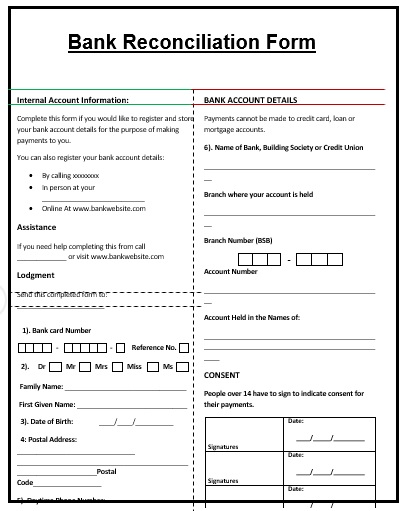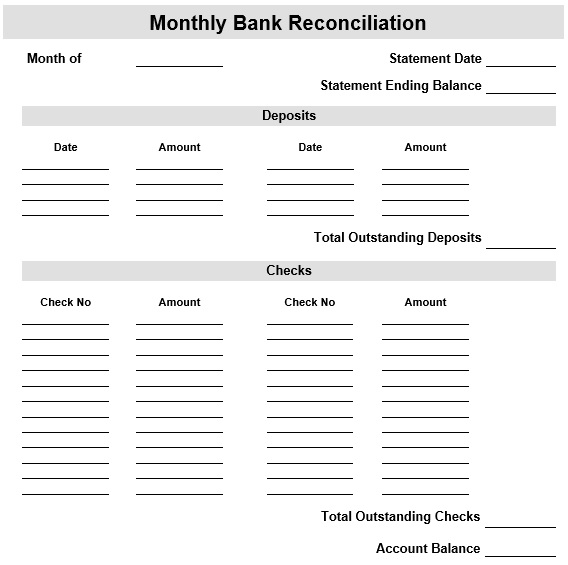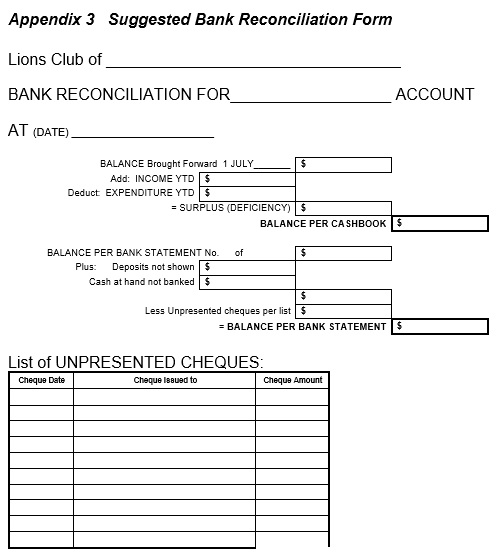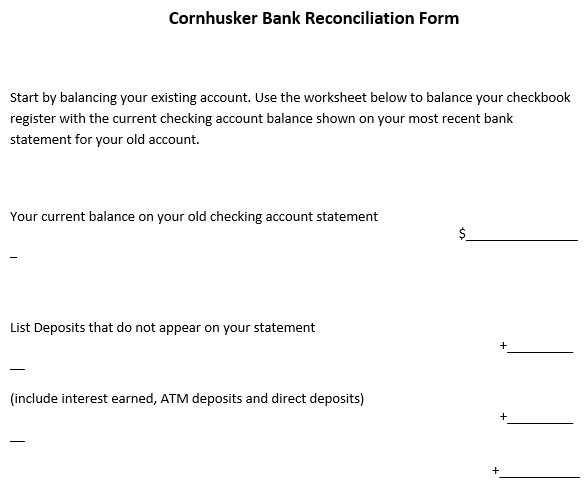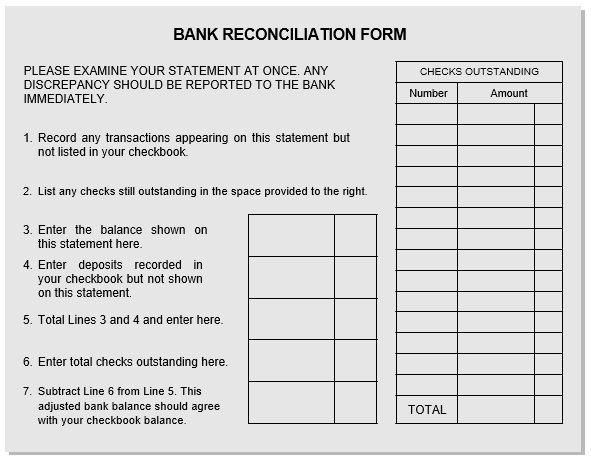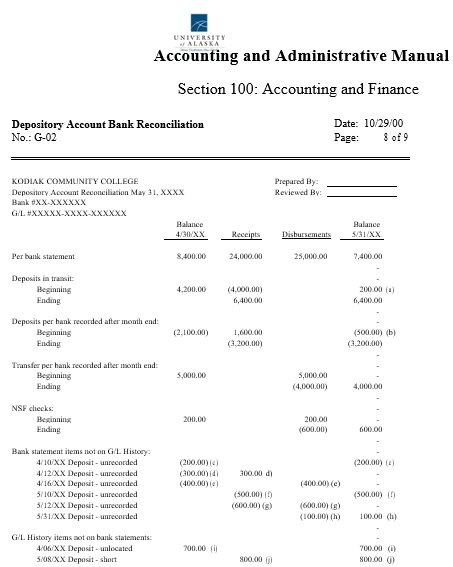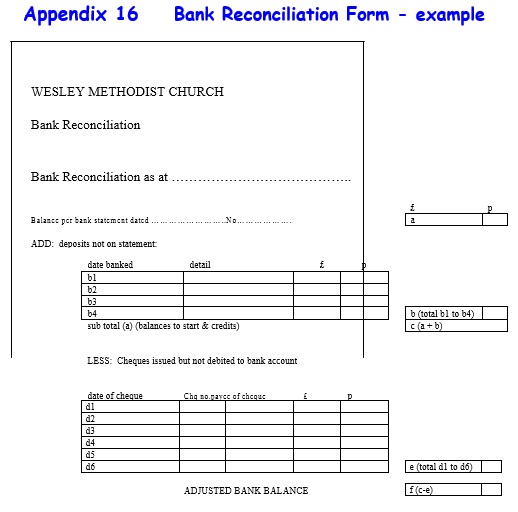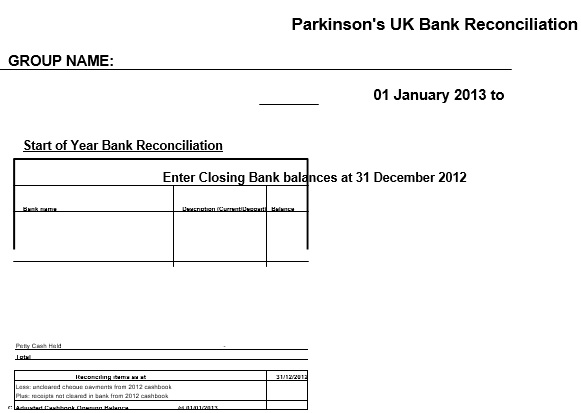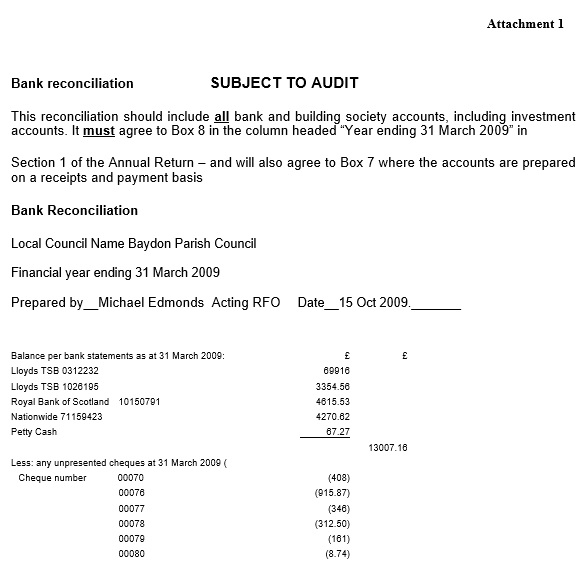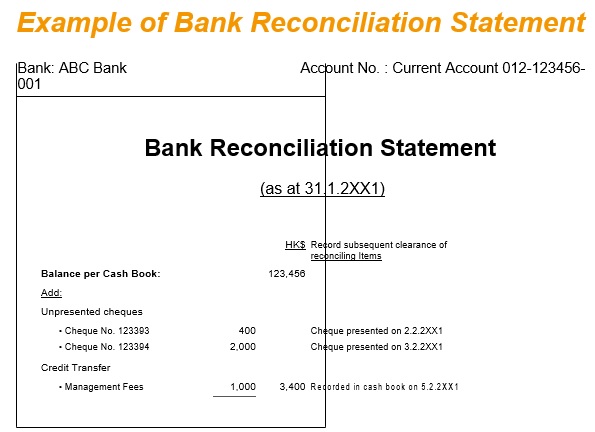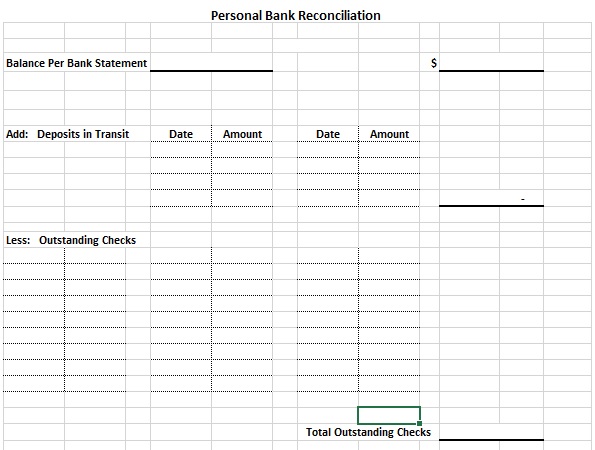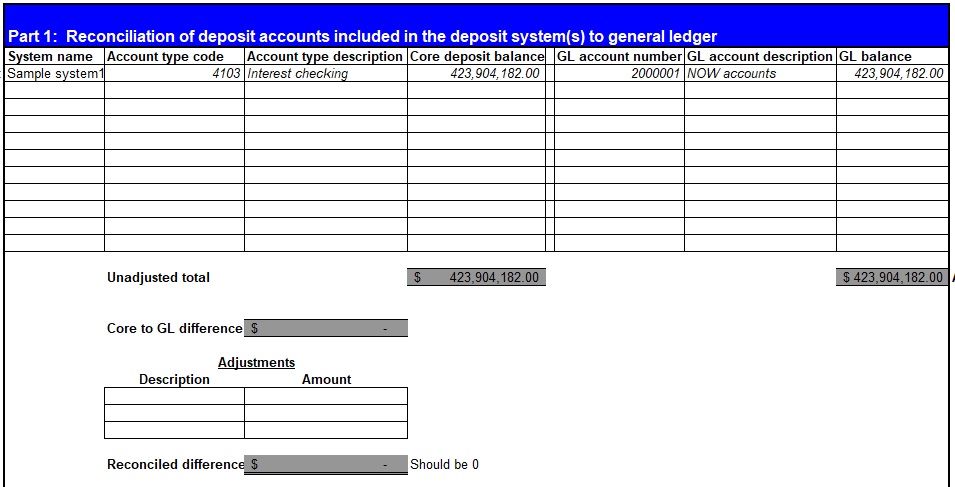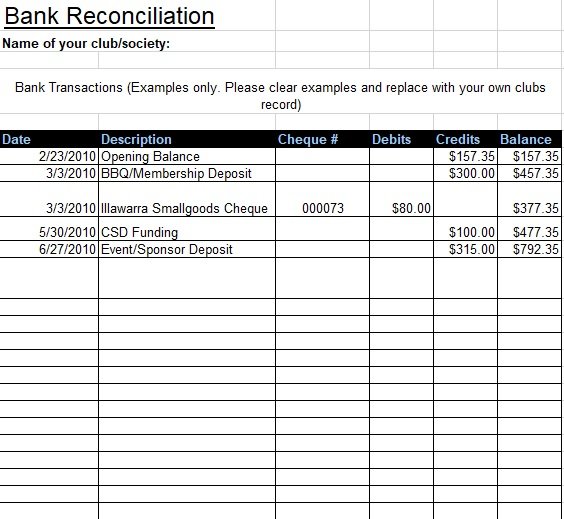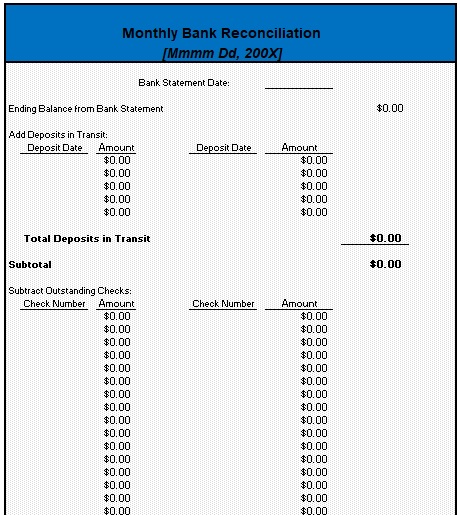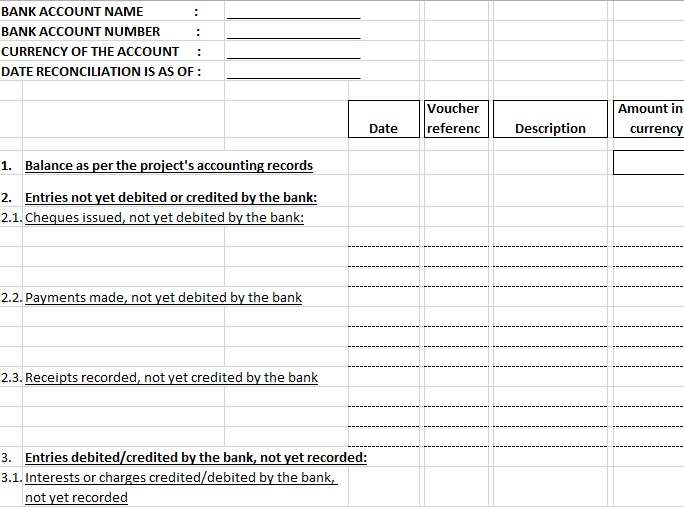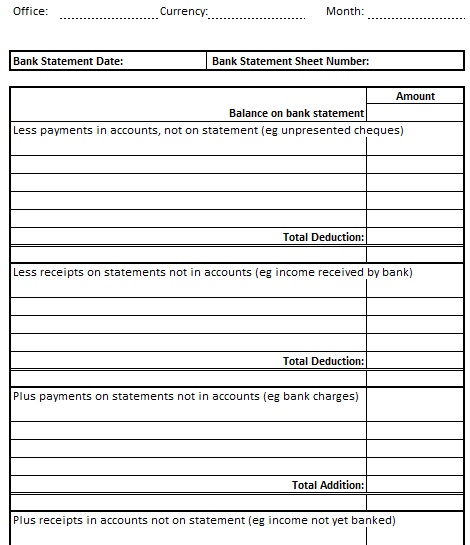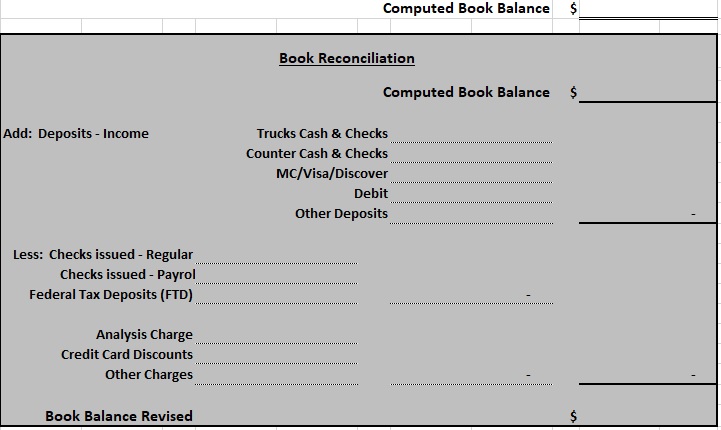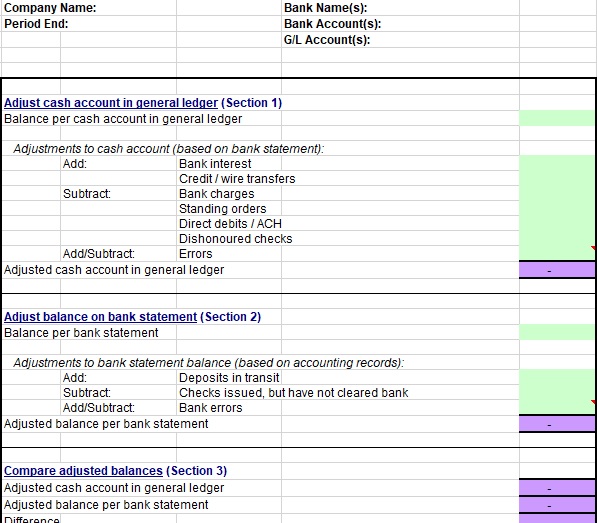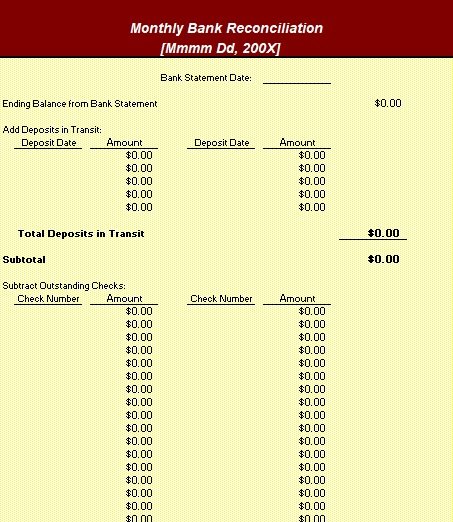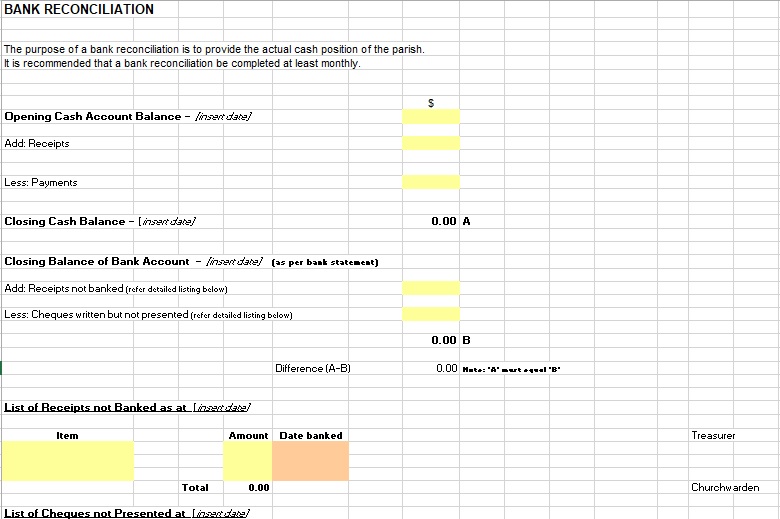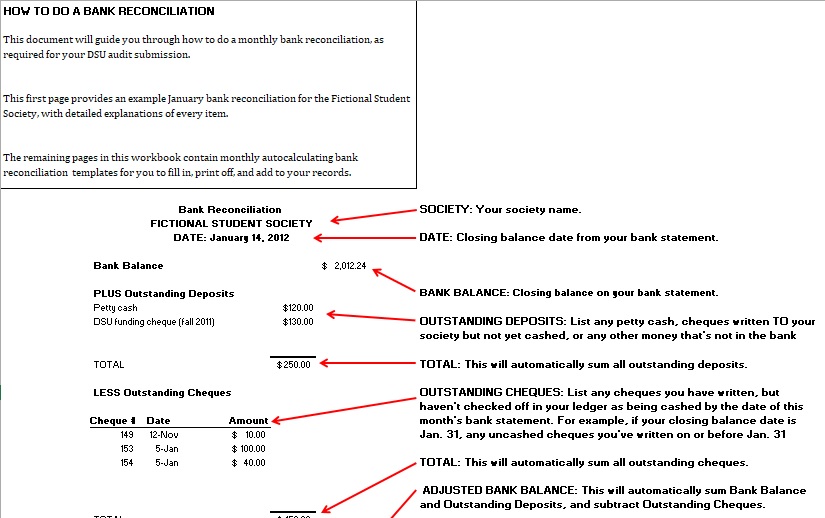A bank reconciliation template is an extremely helpful document for you to know different bank processes while dealing with different transactions with your bank. A bank reconciliation is generally a process that provides an explanation in any discrepancy on a certain date between the bank balance and the equivalent amount.
The bank balance is displayed in a company’s bank statement as provided by the bank. On the other hand, the equivalent amount is presented in the company’s own records for accounting.
Table of Contents
What is bank reconciliation?
A bank reconciliation is a useful financial internal control tool that contains a summary of banking and business activity which reconciles the bank account of an entity along with its financial records. The deposits, withdrawals, and other activities that affect a bank account for a specific period are included in the statement. The bank reconciliation statement is used to thwart fraud. You may also like Bank Statement Template.
The significance of bank reconciliation:
There are other essential reasons why it would be important for you to do bank reconciliation. Also, it is important for you to learn how to use bank reconciliation templates;
- The bank reconciliation will enable you to see immediately whether there are any differences or errors in your company or the bank’s records.
- If we speak realistically, cash is the most vulnerable asset you have in the company. When you perform bank reconciliations, you will get the power to take control of this extremely valuable asset. It would also help you in protecting it by early detection of irregularities such as unauthorized withdrawals from the bank. Definitely, it would be important to clearly define and separate the responsibilities of the people in charge of accounting for the process of control to function effectively. The people who are in charge of preparing and keeping track of the bank reconciliation statements, authorize the transactions with the bank from their duties.
- When you know that all your records match with the records shown on the bank statements, you would be able to feel secure. You will regularly check them through bank reconciliation. The one less thing to worry about in your company is being updated and knowing that all your accounting is in order.
- You would be able to monitor the cash flow of your company regularly when you put someone in charge of monthly bank reconciliation. Also, you would be able to identify whether you are doing well or your company or business is in trouble.
- The bank reconciliation is also used to verify that all the data in your company’s accounting records are exact in comparison with the bank transactions. It would also make you able to check whether there are any unnecessary delays in the collection or clearance of checks.
- With the help of regular bank reconciliation, you would easily detect and correct the mistakes that are made in your company records. In case, you have seen that some entries have not yet been recorded, it would act as an indication for you to update your accounting records.
The purposes of bank reconciliation:
Let us discuss below the different purposes of bank reconciliation;
To get an update about your bank accounts balance
You would have to reconcile your bank account with all your checks, withdrawal, and deposit records in order to become able to determine your actual bank account balance. Maybe your bank balance statement not indicate the payments which you have made or the payments which you have not yet subtracted from the balance posted.
You have to know your actual bank account balance in order to avoid overdrawing from your account and to be able to make sure that you have enough money to cover all the withdrawals.
To become able to find out problems that you may not be aware of
You would be able to review your bank account statements against your company’s personal records by performing bank reconciliation regularly. Also, you can see if there are any errors or problems. Bank automation or even human errors may cause these errors.
These errors might be in the form of inaccurate deposit or withdrawal amounts. You will be able to discover these errors immediately by doing monthly bank reconciliation. You won’t have to take too much time in analyzing as you’d only have to review monthly statements and records.
To become to determine any checks which haven’t been encashed yet
If you have any undiscovered checks which haven’t been encashed, this could potentially cause financial problems for you. The checks end up not getting encashed or deposited in the bank that get lost in the mail, get detached from a payment stub for a bill or are forgotten entirely.
Furthermore, you have to make sure in doing bank reconciliation at regular intervals that you won’t have any outstanding checks so all your deposits and all your payments to creditors are updated. In case, you forget these outstanding obligations, uncashed checks can also lead to you overdrawing your account and then you only use your checking account statement as your reference.
To carry out internal auditing efficiently
Bank reconciliation is used by most businesses and organizations routinely in their finance and accounting departments. You would have to do the same in order to be able to make sure that your internal auditing is accurate. If you own a small company or a large one, then to manage your cash flow well and be updated regarding all your finances, you’d have to do regular bank reconciliation as part of the internal audit processes.
To review your finances
Doing monthly or regular bank reconciliation would act as an informal review of all your finances. You would become able to clearly see how cash flows in your company by reconciling your records of what you are spending and what is being deposited to your account. Also, you can develop whether or not you are earning more than you are spending. With the help of this review, you will be updated in terms of financial information that would assist you in managing your finances more efficiently. You should also check Bank Deposit Slip Templates.
How to prepare a bank reconciliation or a bank reconciliation form?
- At first, inspect your bank statement balance thoroughly. By obtaining all you banks statements, you can do this. You would have quicker access to your bank account and your bank statements if you are registered online.
- Take a note of the month-end balance when you have your statements. In case, your bank balance and your company account records match, it indicates all transactions would appear on all the records.
- Any withdrawal from your bank account could be referred to as “debits” when you’re looking at your bank statement. On the other hand, any deposits made to your bank account would be known as “credits.”
- It would be referred as a “reconciling item,” when you find a transaction which only appears in one record either in the bank statement or your own records. The main objective is to build the reason why there is such an item and make corrections till your records match.
- By adding onto the bank balance, prepare your bank reconciliation form first to make up for any deposits that might not have been recorded or posted yet.
- Next, to make up for any or all of your outstanding checks, you would have to decrease the bank balance.
- To ascertain that any outstanding checks from the previous month have already been cleared, you should make sure to check your previous month’s statement.
- You should confirm that whether or not there are any errors committed by the processing department of the bank. All your transactions would probably be posted on a general ledger in case you are making reconciliations for a cash account of your business.
- You can’t find the explanation for the discrepancy isn’t due to a bank error, then there fraudulent activity may have happened.
- You should first confirm whether all checks have already been posted to be able to adjust your general ledger balance.
- At all the checks, take a look that you have issued in numbered order. You have to confirm that the checks have been posted in your bank statements. Specify in your accounting records, if your checks had cleared. You should already have a list of all the checks when you are done with looking at all your checks.
- It is also essential to verify that all your deposits have already been posted.
- Make a separate list of all deposits which do not appear on your bank account when you are done with reviewing your deposits. The amount of the deposit and the date when it has made should be included.
- You should bear in mind that you have to deduct charges and fee of any and all automated debits or services. These charges generally are posted on your bank statement. But, at the end of the month, it may not be posted on your cash account.
- You should ensure to carefully check whether you had made any errors during the month. You might discover some errors which you had missed previously when you compare your records to your bank statements.
The advantages of Bank reconciliation:
There are different advantages of bank reconciliation;
Detecting fraudulent activity
Basically, bank reconciliation is comparing the accounting records of a company to their bank accounts and statements. You would have to start searching upon discovery of any discrepancy for the cause of it or the reason behind it. However, there may have been fraudulent activity in your company in case you can’t find the cause for the discrepancy.
Avoiding overdraft
Sometimes, bank statements are not updated as cash outflow tends to lag. You would have to know how much money you have at the most current time in cases when your company is operating on minimal funding reserves. This way, you can trying to avoid overdraft or spending more than what you have. You will be able to manage your finances much more efficiently if you do monthly bank reconciliation as well as you can avoid giving checks that would most likely bounce or end up being NSF checks.
Determining errors made by the bank
Banks are not considered perfect institutions as well as the people who are working in them. There are different cases in which bank errors are committed by the system or by the people who are handling the transactions. You would be able to determine these errors early on by doing regular bank reconciliation. You can also determine whether the errors have been made by the bank or your own people.
What are the requirements for bank reconciliation?
Both the current and the previous month’s statements along with the closing balance of the account are required for completing a bank reconciliation statement. The bank reconciliation statement is typically prepared by the accountant by using all transactions through the previous day.
To reflect outstanding checks or withdrawals, the accountant adjusts the ending balance of the bank statements. In some transactions, the payment is en route but the cash has not yet been accepted by the receiver.
Conclusion:
In conclusion, a bank reconciliation template is a document used to compare the accounting records of a company to their bank accounts and statements. The bank reconciliation acts as an informal review of all your finances.

